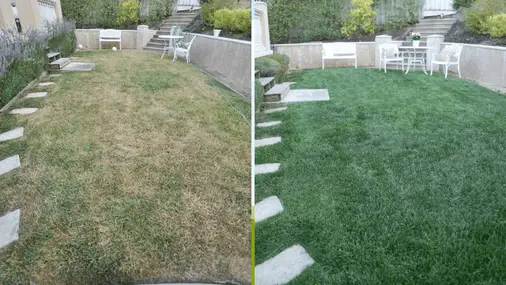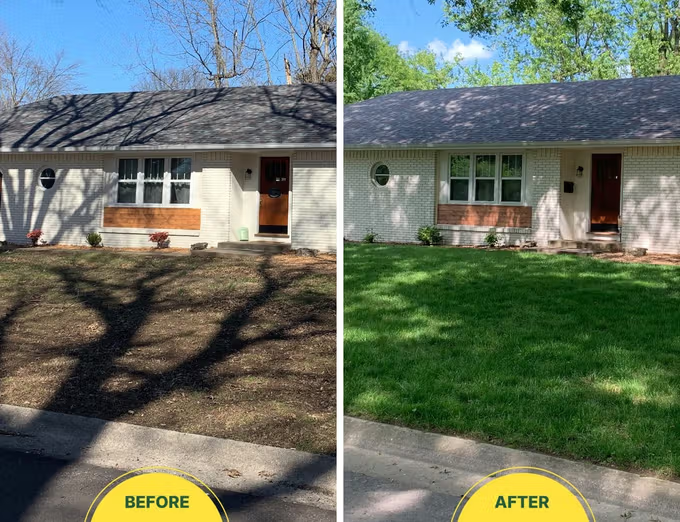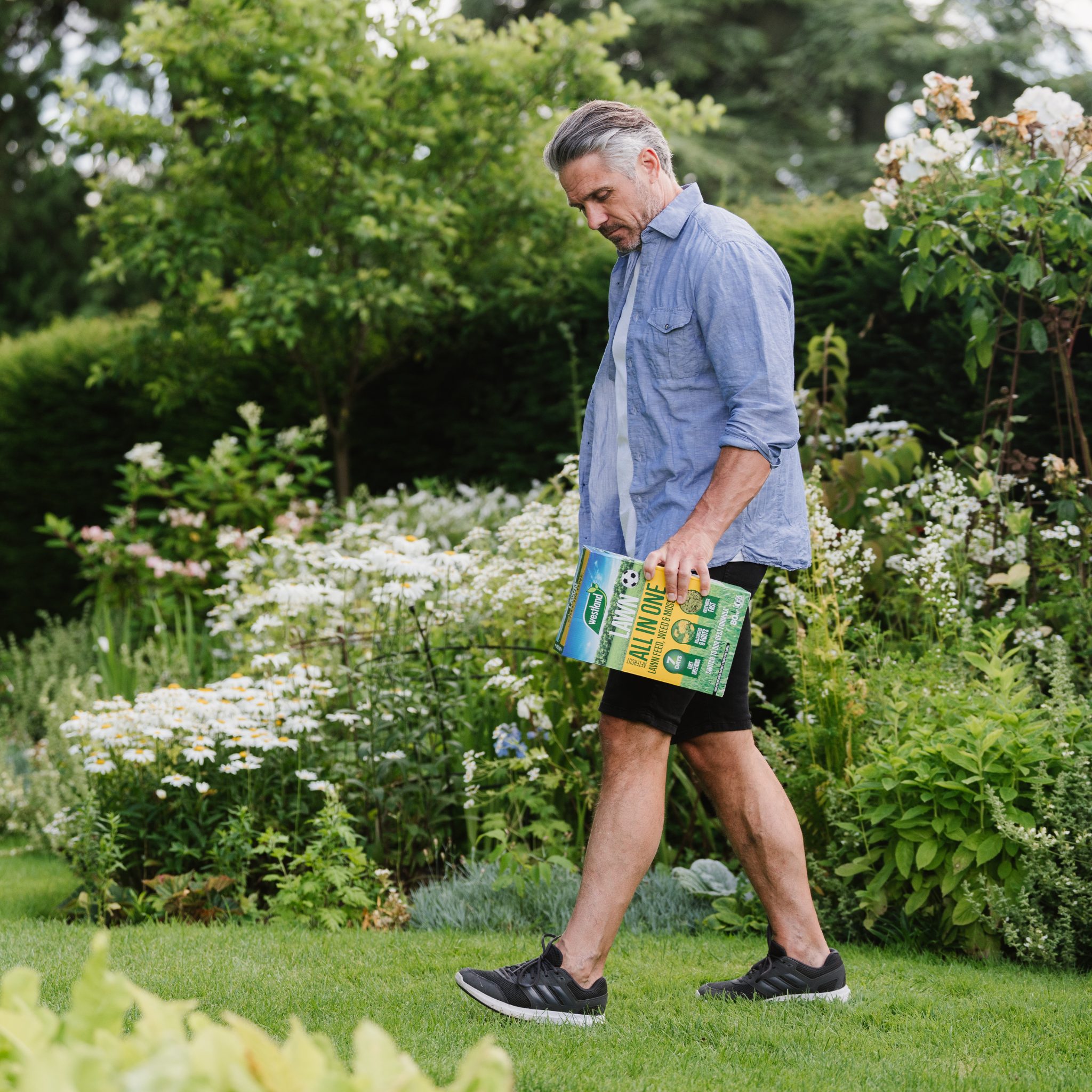What to Do If Grass Seed Doesn’t Grow
Last Updated on March 16, 2025 by Duncan
Imagine this. You purchase grass and are over the moon that you will have the lawn of your dreams. You prepare the yard and plant the grass, and nothing comes out after waiting for a week.
You think the problem might be because you aren’t watering the lawn, so you water the grass seed 3-4 times a day and after a week, nothing!
You clean up the area with a rake and throw down the topsoil, but still nothing. You are confused.
If you are in such a predicament, you should know you are inches away from getting your grass to grow in your yard. You only need to change your tactics. To help you out, here is what to do if grass seed doesn’t grow:
Check the grass seed type.
If you are doing everything right to prepare your lawn for the grass, but it’s not growing, the chances are high that you are using the wrong grass type.
Did you know that different grass varieties do well in other areas of the country?
Best grass seed for the northern states
You should go for cool-season grass if you live in New York, Ohio, Minnesota, Indiana, Wisconsin, and other northern states. This grass thrives in late spring and early fall and does well at temperatures between 60 and 75 degrees Fahrenheit.
Some of the best cold-season grass varieties you should go for are:
- Fine fescue
- Bentgrass
- Kentucky bluegrass
- Tall fescue
- Creeping fescue
- Ryegrass
Best grass varieties for Southern states
You should go for warm-season grass seeds in southern states such as Louisiana, Florida, Alabama, Texas, South Carolina, Maryland, or Virginia. Some of the best grass varieties for this weather include:
- Buffalo grass
- Bermuda grass
- Centipede grass
- Bahiagrass
- Zoysia grass
- St. Augustine grass
Best grass variety for the transition states
You are in the transition zone if you live in the states between the North and South. Here, you have both hot summers and freezing winters, so there is no definite grass type you should go for.
The ideal way to do it is to find a grass variety that works well in your area. For example, if you are more in the north, go for cold-season grass and vice versa.
Ensure that your lawn is right for the grass.
You might have the best grass variety for your climate, but there is no way you will get the grass to grow if your lawn isn’t properly set up. If you have been planting the grass several times, but it’s not growing, check the condition of the lawn.
Is it under a shade, full sun or a mix? You should pay attention to this, as some grass varieties won’t grow under a shade. For example, all warm-season grass types do well in full sun, so if you are planting them in a shaded area, there is no way they will go, and you will keep complaining that your grass seed isn’t growing.
If shade is the reason your grass isn’t growing, you can go around it in several ways. If you are like other homeowners and don’t want to remove the offending tree or hedge, find a shade-tolerant grass type and plant it instead.
Is the area heavily trafficked? If you have people or even dogs walking on the lawn all the time, there is no way your grass seed will grow. For the grass to grow, you must secure the area so your pets and people don’t get there.
You should also determine the moisture level in the area. While all grass varieties need water to germinate and grow, too much or too little can lead to problems.
For example, excessive water can prevent the grass seed from germinating or wash the seeds away. Too much water can also drown the seeds, and when this happens, the grass seeds end up floating up to the surface and pulled out of the soil, or they are washed to the lower parts of your lawn.
The grass should have the right amount of water to grow on your lawn. If water tends to accumulate in the area, especially during the rainy season, you should devise ways to drain it so you remain with the appropriate amount of water.
When irrigating the grass, take care that you don’t overwater the area that you end up damaging the grass.
Sometimes the grass seed will fail to grow due to the old sod competing with the new seed. To increase the chances of the new grass growing, eliminate the old grass. The beauty is that you don’t need to hire a professional or use specialized tools—the basic lawn tools will do the work.
If you don’t want to use the tools, you can use the nonselective chemicals while taking care not to hurt yourself.
The soil condition on your lawn will also play a vital role in determining whether the grass grows or doesn’t. To tell whether the soil is right for your grass, you need to test it.
One of the things you should test for is the soil pH. Most grasses do well in slightly acidic soils with a pH between 6.2 and 7. So, if your soil is above or below these levels, you should adjust it accordingly.
You should also test the soil for major plant-building nutrients such as potash, phosphorus, and nitrogen. Again, adjust the nutrient levels accordingly using fertilizers.
Plant grass at the right time
Ensuring your lawn is ready for the grass seed isn’t enough—you need to plant it at the right time. You might think you can grow the grass anytime, but this isn’t right.
Always remember that grass grows in seasonal cycles, and to increase the chances of your grass growing, you need to plant it in the right season.
The best time to plant your grass seed depends on your location. If you live in the north, you need cool-season grass such as Kentucky bluegrass and fescue, and the best time to plant them is early fall.
Do you live in the south? The best time to do the planting is late spring. As mentioned above, ensure you use warm-season grass species that will do well in the area.
Plant the grass properly.
Sometimes, the grass might fail to grow in your lawn simply because you aren’t planting it correctly. One of the mistakes people make is applying too much grass seed, leading to unnecessary competition for resources, including light, nutrients and water.
While the grass seeds will germinate, they won’t thrive.
Follow the manufacturer’s recommendations to get the grass to grow in your yard. You can get away with going a little heavy on the seed, such as 1.5, the recommended amount, but don’t go overboard, as this will lead to the grass not growing.
Another mistake homeowners make is using too little seed. Out of saving money or being afraid of overstuffing the seeds, some homeowners use too little seed, making some lawn areas bare, patchy, or too thin.
Other homeowners bury the seedlings too deep or shallow into the soil that they fail to germinate and thrive.
The key to getting your grass to grow and thrive is to plant it properly. A manufacturer gives plenty of resources, but if you are still stuck on how to go about it, get the input of a professional.
Get professional help
Have you tried all of the above tricks, and still, the grass isn’t growing in your yard? You should get professional help from your county extension office. If you live in a rural area or in a town that isn’t densely populated, the county representatives might visit your home and advise you on what to do to get the grass to grow.
Another thing you can do is to get professional help from lawn care professionals. Experienced landscape designers, contractors and practitioners will inspect your lawn and advise you on how to get your grass seeds to germinate and thrive.


